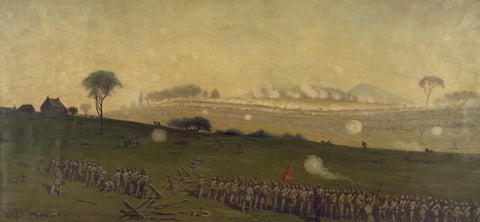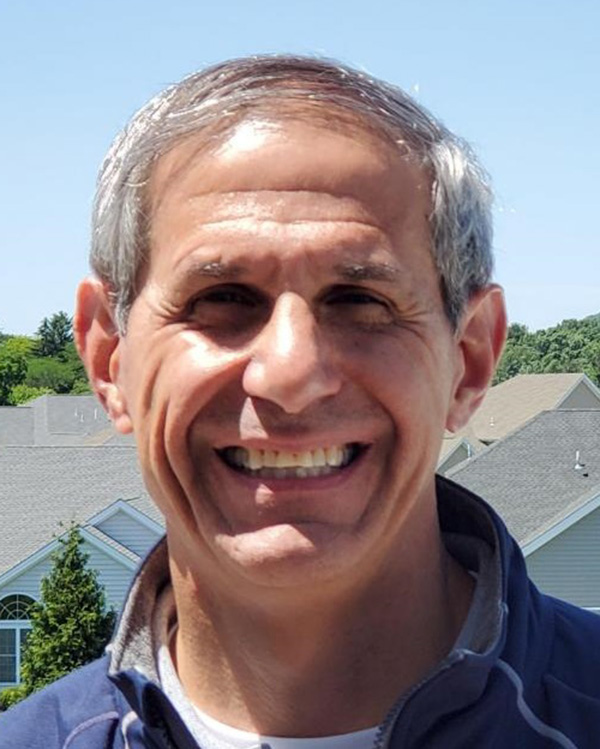
Bullets Weren’t the Only Thing to Worry About at Gettysburg — The Heat Could Be Just as Dangerous
Gettysburg Heat
Soldiers recalled the sweltering heat during the Battle of Gettysburg, and historical records say it was 87 degrees in the shade at 2:00 p.m. on July 3, 1863. Gettysburg battlefield guide and author Jeffrey J. Harding teamed up with Pennsylvania State University meteorologist Jon M. Nese, Ph.D., to pin down what soldiers likely experienced—and the number on the thermometer doesn’t tell the full story. Previously overlooked primary source meteorological records allowed for the calculation of heat index during the battle, for the first time ever. In turn, this newly revealed information put a scientific lens on the terrible heat stress soldiers described.
CWT: What put you on the trail to answer this question?
JH: In early 2018 I set my mind to find out why in the world Pennsylvania College (later Gettysburg College) Professor Michael Jacobs—who was an instructor of mathematics and what they called natural philosophy back in 1863, which is basically physical science—was so steadfast in his effort to obtain weather observations during the battle. I also set out to try and find an original copy of his records, none of which was extant in any of the places you would usually expect, in and around Gettysburg—the Gettysburg College library, the Adams County Historical Society, the National Park Service, what have you.
Jeff Harding (Courtesy of Jeff Harding)
CWT: Where did you look for answers?
JH: ~~.~~ I was fortunate that my colleague, Jon Nese, had published a book The Philadelphia Area Weather Book , which he co-authored with Glenn “Hurricane” Schwartz. The book had some great information in it that led me to understand that Jacobs was recording weather observations in the course of his duties as a weather observer for Adams County, Pennsylvania, as part of the Smithsonian Meteorological Project. This project employed a number of weather observes, from all across the nation, who reported weather data to the Smithsonian. Fortunately, the National Center for Environmental Information (NCEI) had the records in a database called FORTS and that database turned out to be a gold mine for me. As it turned out, Jacobs’ original records were more detailed than the secondary source version of his records that was published by his son (Henry Eyster Jacobs) in 1885.
CWT: No one had looked at them before?
JH: To my knowledge, prior to 2018, no historians had used Jacobs’ original source documets save fore a the noteworthy weather historian David Ludlum. No one had delved into things to get at what the heat index might have been and, as a battlefield guide, that is a question I get all the time: how hot did it really feel? We know from Jacobs it was 87 degrees F at 2:00 p.m., in the shade. This was the highest temperature Jacobs recorded during the battle and the high for the month of July 1863 (per Jacobs). But the famous charge known by most as "Pickett’s Charge," took place an hour later, between 3:00-4:00 p.m. Just how hot was it when these guys were traipsing across this open ground, ¾ to a mile wide in the midst of all this heat and sunshine? Unfortunately, we could never answer that. I asked Jon, “Is there anything in Jacobs' original records that can give us an inkling as to what the heat index might have been during the charge?”
JN: We will never know what the temperature was during Pickett’s Charge because Jacobs did not record the temperature at 3:00 p.m. All we have is his measurement at 2:00 p.m. (Jacobs recorded temperatures three times a day, at 7:00 a.m, 2:00 p.m, and 9:00 p.m.). We can do some modern day analysis and figure that it was probably a couple of degrees warmer during Pickett’s Charge than it was at 2:00 p.m. We can make reasonable guesses as to temperature. Jeff used the term heat index. What that is is an attempt to quantify what it felt like if you take into account humidity. It’s the humidity part of the puzzle that is missing, because Jacobs didn’t take measurements of humidity. To make a long story short, there were observers within 35 miles of Gettysburg who were taking measurements of atmospheric humidity. Those observers were in Harrisburg. To the best of our knowledge, no one had really tried to use those measurements of humidity. Harrisburg’s climate is similar to Gettysburg’s climate, and there is no reason to think it was different in 1863. Take those measurements in Harrisburg, convert them into a form that is extrapolatable—if there is such a word—and then combine them with what Jacobs told us the temperature was in Gettysburg. That is what we did.
CWT: What does that do to the soldier in the field?
JN : We all have experience being outside in hot weather, and some days are more humid than others. The body's main cooling mechanism is the evaporation of sweat, and the more humid the air is, the harder it is for sweat to evaporate. You don’t cool as efficiently. What it means for soldiers in the field is that bodies don’t cool as efficiently in humid weather. 90 degrees F in Phoenix feels different than 90 degrees F in Atlanta because of more humidity in the air. Ultimately what it translates into is—if you do the math—the heat index during the Battle of Gettysburg on the third day late afternoon was probably in the upper 90s plus or minus a couple of degrees.
CWT: When do such conditions cause you to lose the ability to cool the body? Were these guys dying of heat stroke potentially?
JH: The National Weather Service has a table showing the detrimental effects of being involved in physical activity or exposure for any period of time by ranges of temperature. With a heat index of 90 degrees F to 103 degrees F, people can have heat strokes, heat cramps, or heat exhaustion with prolonged exposure and/or physical activity. That covers the range we were looking at. We are saying the heat index during Pickett’s Charge was very likely somewhere between 98 degrees F and 105 degrees F.
JN: Jacobs told us that the sky was not completely cloudy. These soldiers were exposed to sun. To the best of our abilities, we tried to estimate the heat index, a measure that combines heat and humidity. The new scientific part of this work is attempting to incorporate the humidity of the air into this quantity called heat index, which wasn’t invented until the 1970s. In the 1860s there was something called the wet bulb temperature. There is also relative humidity and the dew point (another measure of atmospheric humidity). They are all related scientifically by complicated mathematical relationships, but the bottom line is if you have one of the three—wet bulb temperature, relative humidity, or dew point—and you have the temperature, you can get the heat index.
 Jon
Nese (Courtesy of Jon Nese)
Jon
Nese (Courtesy of Jon Nese)
CWT: Is that new measure consistent with what soldiers described?
JN: The soldiers themselves described some of the conditions, and what they’re describing is certainly consistent with the numbers we’re coming up with for Gettysburg and some of the others that Jeff has come up with for some of the other battles in Virginia.
JH: The soldiers were wearing wool uniforms, long underwear, and many had been on long marches. In fact, some of the soldiers in Pickett’s Charge had marched 30 miles the day prior, and now they are waiting to charge in open fields with some degree of sunlight. That is going to take its toll. Heat index in direct sunlight could add up to 15 degrees. With enough sun, it is certainly going to be that much more uncomfortable for these guys. As a historian you always have a guard up against exaggeration. When you see these numbers, you finally have a scientific way to get pretty close to what they were dealing with. In most cases it validates what they were saying.
